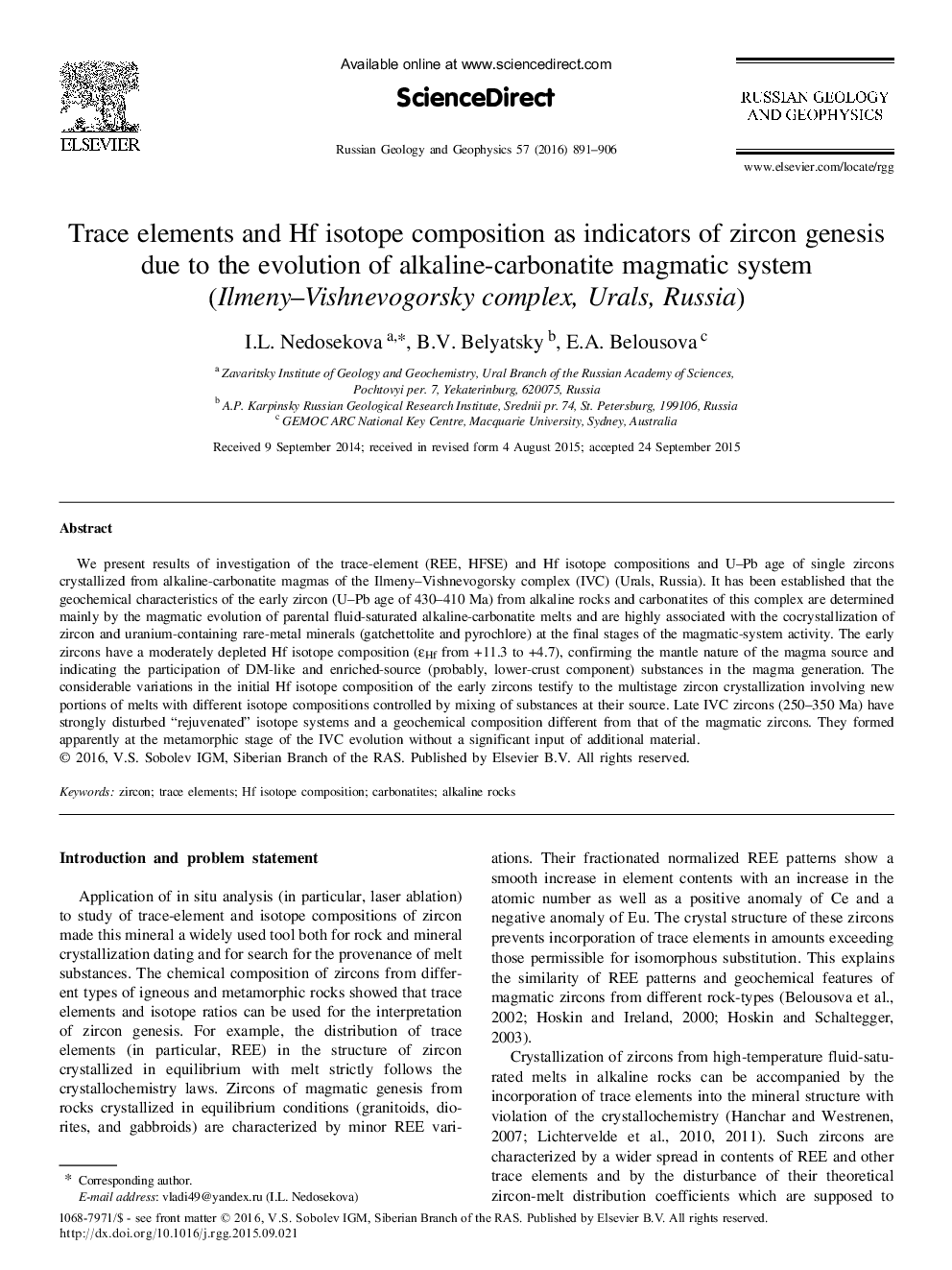| Article ID | Journal | Published Year | Pages | File Type |
|---|---|---|---|---|
| 4738829 | Russian Geology and Geophysics | 2016 | 16 Pages |
We present results of investigation of the trace-element (REE, HFSE) and Hf isotope compositions and U-Pb age of single zircons crystallized from alkaline-carbonatite magmas of the Ilmeny-Vishnevogorsky complex (IVC) (Urals, Russia). It has been established that the geochemical characteristics of the early zircon (U-Pb age of 430-410 Ma) from alkaline rocks and carbonatites of this complex are determined mainly by the magmatic evolution of parental fluid-saturated alkaline-carbonatite melts and are highly associated with the cocrystallization of zircon and uranium-containing rare-metal minerals (gatchettolite and pyrochlore) at the final stages of the magmatic-system activity. The early zircons have a moderately depleted Hf isotope composition (eHf from + 11.3 to + 4.7), confirming the mantle nature of the magma source and indicating the participation of DM-like and enriched-source (probably, lower-crust component) substances in the magma generation. The considerable variations in the initial Hf isotope composition of the early zircons testify to the multistage zircon crystallization involving new portions of melts with different isotope compositions controlled by mixing of substances at their source. Late IVC zircons (250-350 Ma) have strongly disturbed “rejuvenated” isotope systems and a geochemical composition different from that of the magmatic zircons. They formed apparently at the metamorphic stage of the IVC evolution without a significant input of additional material.
